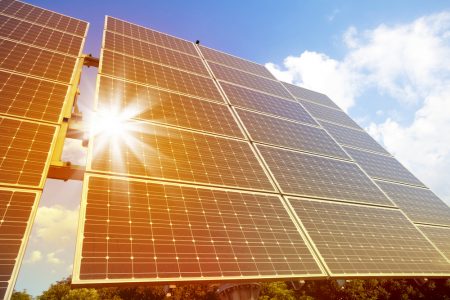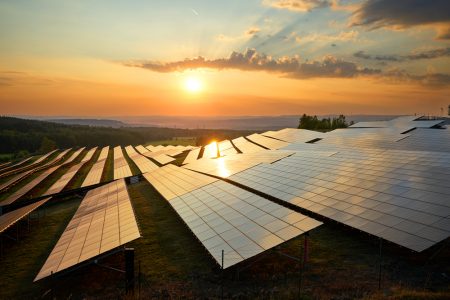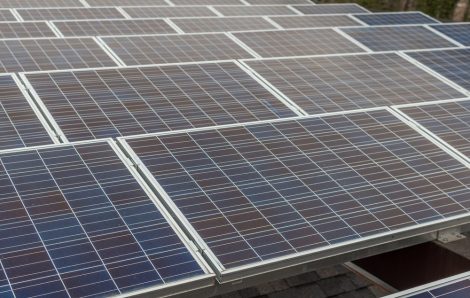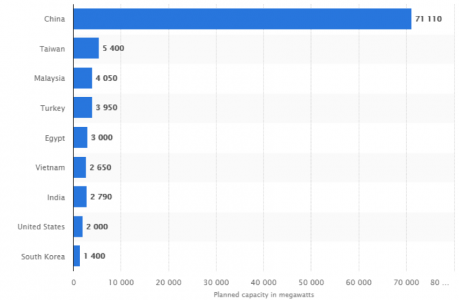Tariffs Hit Hard in Q3: What Impact Did This Have on Solar Market?
 The new 2018 U.S. solar tariff which was signed on January 23, 2018 by the Trump Administration levies a 30% tariff on all solar imports to the United States for the next four years. Although developers and contractors tried to secure models in the past few months before the tariffs hit, Q3 2018 is where the impacts of the new 30% tariff have been seen, according to a SEIA and Woods and Mackenzie report. Let’s take a deeper look at the impact this has had on the solar market.
The new 2018 U.S. solar tariff which was signed on January 23, 2018 by the Trump Administration levies a 30% tariff on all solar imports to the United States for the next four years. Although developers and contractors tried to secure models in the past few months before the tariffs hit, Q3 2018 is where the impacts of the new 30% tariff have been seen, according to a SEIA and Woods and Mackenzie report. Let’s take a deeper look at the impact this has had on the solar market.
Solar Installation
Solar installation during Q3 fell 15% year-over-year to 1.7 GWdc (gigawatt direct current). The utility-scale sector saw the biggest impact from the tariffs, where installations fell to 678 MW (megawatt). Most predict that the market at the end of 2018 will remain relatively flat in comparison to 2017.
“Developers originally planning to bring projects online in Q3 2018 were forced to push out completion dates to Q4 2018 or Q1 2019 due to uncertainty around tariffs,” said Colin Smith, Senior Analyst at Wood Mackenzie. “We did, however, see utility PV procurement outpace installations fourfold in Q3, showing that despite the tariffs causing project delays, there is substantial growth ahead for the U.S. utility PV sector.”
Residential Installation
Although the utility-scale sector experienced a decrease in installations, residential solar was up 11% year-over-year, with an increase in California’s solar market. This didn’t happen right away, the tariff first caused the cost of solar sold to American homeowners to spike, and the cost of solar is 5.6% higher now than it would have been.
What’s to Come?
“If not for the tariffs, the U.S. solar market would undoubtedly look better today than it does now,” said Abigail Ross Hopper, SEIA’s president and CEO. “However, as this report shows, this is a resilient industry that cannot be kept down for long.” Wood Mackenzie expects many of the delayed projects to come back online by the end of the year. Due to the new 2018 solar tariff, there has been a negative impact on the solar energy market, but the report also shows that the solar industry is resilient and it will make a comeback in the new year.
Across all other markets, solar is competing with lower-cost fuel sources such as wind and natural gas. This means with the increase in solar costs and the competitive marketplace, homeowners, utilities and businesses might be more likely to choose an alternative to their power generation.
How Intersect Can Help
Interested in investing in a new solar power project in the new year? Intersect Energy is an on-site energy company that can provide you with turn-key energy solutions. We have experience when it comes to alternative energy on-site energy generation, we know the process. Contact us today so we can help you get started on your next solar power investment. Don’t forget to stay up to date with all the latest news in the renewable energy industry by following us on LinkedIn.
 Although solar power is often thought of as a bespoke investment, recent trends are causing investors and sources of capital to fight for limited supplies of feasible solar power projects. What has led investors to battle for solar power? The Distributed Energy System experts at
Although solar power is often thought of as a bespoke investment, recent trends are causing investors and sources of capital to fight for limited supplies of feasible solar power projects. What has led investors to battle for solar power? The Distributed Energy System experts at  Xi and Trump have agreed to a 90 day ceasefire on future tariffs in order to discuss significant structural changes to the trading relationship between the US and China. Currently, there is a 30% tariff on any imported solar panels, which equates to approximately $0.09/watt of an installation. For utility scale solar, this would be approximately 10% of the total installation cost of a solar project. This will significantly impact the solar industry’s ability to grow and doesn’t make clear sense given the number of jobs created from solar development in the United States.
Xi and Trump have agreed to a 90 day ceasefire on future tariffs in order to discuss significant structural changes to the trading relationship between the US and China. Currently, there is a 30% tariff on any imported solar panels, which equates to approximately $0.09/watt of an installation. For utility scale solar, this would be approximately 10% of the total installation cost of a solar project. This will significantly impact the solar industry’s ability to grow and doesn’t make clear sense given the number of jobs created from solar development in the United States.